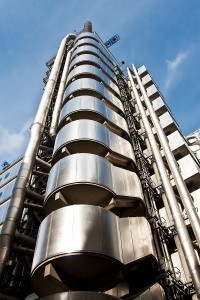Lloyd’s of London reported a £1 billion (US$ 1.3 billion) loss for 2018, attributed to an above-average number of major natural catastrophes such Hurricanes Florence and Michael, Typhoon Jebi in Japan, as well as the Californian wildfires in the fourth quarter.
Claims from these disasters cost Lloyd’s £2.9 billion ($3.8 billion), which is significantly higher than the long-term average of £1.9 billion ($1.3 billion), said Lloyd’s in a statement.
 Nevertheless, the market reported an improved combined ratio of 104.5 percent, compared to 114.0 percent in 2017 when the market reported a £2 billion (US$2.6 billion) loss, also driven mainly by major natural disasters. (A combined ratio above 100 percent indicates an underwriting loss).
Nevertheless, the market reported an improved combined ratio of 104.5 percent, compared to 114.0 percent in 2017 when the market reported a £2 billion (US$2.6 billion) loss, also driven mainly by major natural disasters. (A combined ratio above 100 percent indicates an underwriting loss).
Lloyd’s Chief Financial Officer John Parry pointed to other contributing factors such as the continuing challenges in both market pricing and investment market conditions. Net investment return dropped to £500 million ($660.4 million), compared to £1.8 billion ($2.4 billion) in 2017.
The market reported gross written premiums of £35.5 billion ($46.9 billion) in 2018, compared to £33.6 billion ($44.4 billion) in 2017. Parry attributed the growth in premium, in part, to four new syndicates, which joined the Lloyd’s platform in 2018 and added 2 percent to premiums.
In addition, he said, existing syndicates saw an increase of 5 percent with just over half of that coming from business written under delegated authorities, where the Lloyd’s brand is used successfully by managing general agencies to access business, particularly in the U.S.
Pricing Improvements
The good news for Lloyd’s in 2018 is that pricing improvements were seen across the market, which should provide improved results going forward and reduce attritional – or non-catastrophe – losses, indicated Parry during a press briefing in London to discuss the results.
After several years of rate softening, Lloyd’s saw “a reversal of the continued slow decline in pricing … with an increase on renewal business of 3.2 percent,” he said, noting that such rate increases helped reduce the attritional loss ratio by 1.3 percent.
While price increases were more prevalent in loss-affected lines of business, rate increases were seen across the market, Parry said.
Discussing the January renewals, Jon Hancock, performance management director, said the key headline for Lloyd’s is that rates were positive and in line or better than most of the business plans at most of the syndicates.
It was encouraging to see “some signs of good [rate] momentum although more is needed” during the January renewals, he said, which is when about 30 percent of Lloyd’s premium renew.
“Positive rates were achieved at Lloyd’s across six consecutive quarters,” Hancock said. “That’s part of the reason the attritional [or non-catastrophe] loss ratio has improved by 1.3 percentage points last year.”
That’s also part of the reason those attritional loss ratios should continue to improve as the rates start to “earn through the portfolio and as underwriters maintain their discipline,” he added.
The majority of the classes of business, or 88 percent of the premium and 49 out of 61 classes of business, are showing positive rate increases, he affirmed.
“It’s also important to remember that pricing is, and should be, specific to the individual policy and the individual risk, so it’s quite natural that you’ll see rates drop in some portfolios, in some classes and in some individual risks,” he said, noting that this assures customers are charged the right and fair price, not just the market price.
*This story ran previously in our sister publication Insurance Journal.





















 Artificial Intelligence Is Rewriting the Rules for Commercial Lines
Artificial Intelligence Is Rewriting the Rules for Commercial Lines  Surge of Supercharged Hurricanes Prompt Call for Cat 6 Classification
Surge of Supercharged Hurricanes Prompt Call for Cat 6 Classification  Berkshire Hathaway Enters Post-Buffett Era as Share Prices Fall
Berkshire Hathaway Enters Post-Buffett Era as Share Prices Fall  What to Expect in 2026: U.S. P/C Results More Like 2024
What to Expect in 2026: U.S. P/C Results More Like 2024 













